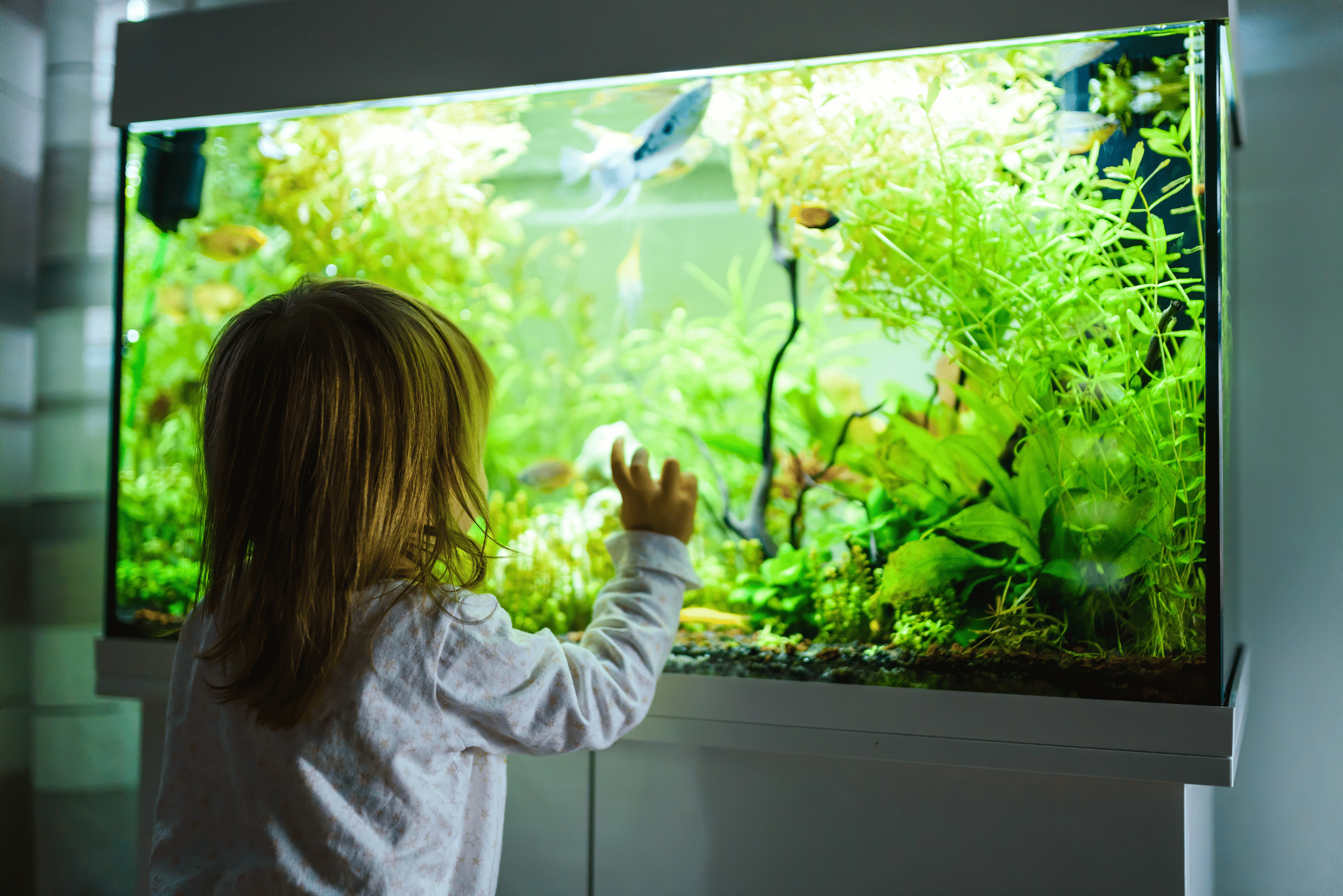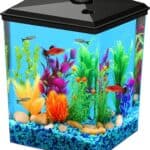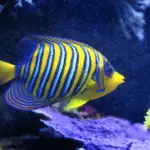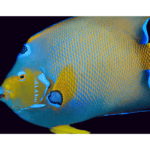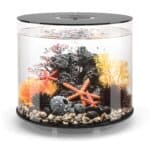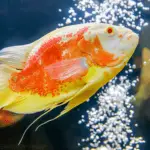Welcome to the exciting realm of aquaponics, a creative blend of aquaculture and hydroponics. This innovative system introduces a holistic approach to raising fish and plants in your home, creating a mutually beneficial environment.
Understanding Aquaponics
Aquaponics works like a miniature ecosystem. Picture an ocean. Fish produce waste, which then provides nutrients for the plant life. In turn, these plants filter the water, keeping it clean for the fish. This symbiotic relationship is the essence of aquaponics.
The Essential Components
An aquaponics system comprises the following key parts:
- Fish tank
- Grow bed
- Water pump
- Aerator
- Plumbing system
- Fish and plants
Each of these elements works in tandem, creating a system that feeds, cleans, and maintains itself. Think of it as building your own sustainable universe.
Step 1: Designing Your Aquaponics System
Designing your system is like assembling a puzzle. Consider factors such as the size of your fish tank and the number and type of plants you wish to grow. A small 20-gallon tank can support an herb garden, while a larger 55-gallon tank could sustain a variety of leafy greens and even some fruits.
Here’s a simple table to guide you:
| Fish Tank Size | Suitable Plants |
|---|---|
| 20 Gallon | Herbs |
| 30-40 Gallon | Leafy Greens |
| 55+ Gallon | Fruits, Vegetables |
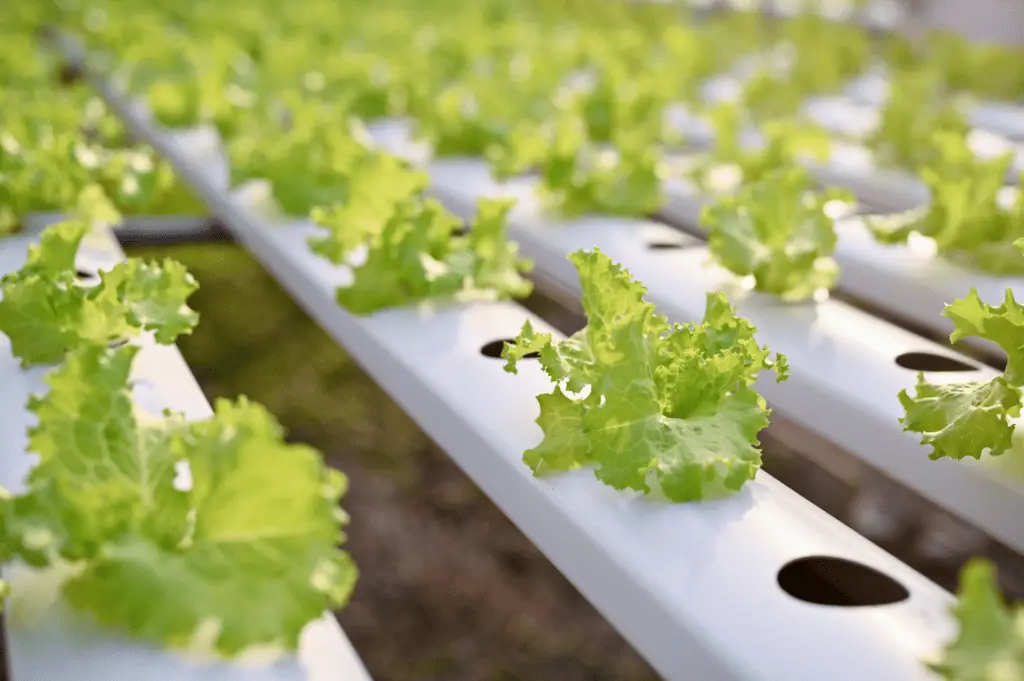
Step 2: Setting up Your Aquaponics System
Firstly, you need to install the fish tank and grow bed, ensuring they align for seamless interaction. The tank should be lower than the bed to allow for gravity-assisted water flow.
Next, connect the water pump and aerator. The pump will circulate the water from the tank to the grow bed. The aerator, much like the waves crashing on a shore, will provide oxygen for your fish.
Now, add the plumbing system, which will distribute the nutrient-rich water to the plants and return the filtered water to the fish.
Step 3: Adding Life to Your Aquaponics System
With the system set up, it’s time to introduce your fish and plants. It’s akin to populating a new planet. Start with hardy fish like tilapia or goldfish and easy-to-grow plants like lettuce or basil.
Ensure that the system is functioning smoothly before adding more sensitive species. Balance is the name of the game in aquaponics.
Step 4: Maintaining Your Aquaponics System
Maintenance involves feeding the fish, monitoring water parameters, and occasionally checking the health of your plants and fish. The beauty of an aquaponics system is that it largely takes care of itself, much like a natural ecosystem.
Troubleshooting Common Issues
Aquaponics isn’t without its challenges. If your plants aren’t thriving or your fish seem unhappy, there are usually simple solutions. Monitor pH levels, adjust lighting, and ensure that the system isn’t overcrowded.
Selecting Your Fish
Choosing the right fish is a crucial aspect of your aquaponics journey. For beginners, sturdy species like goldfish or tilapia can be an excellent choice. As you gain experience, you might experiment with different species. It’s like diversifying your underwater neighborhood.
Here’s a helpful table to guide your choice:
| Fish Species | Difficulty Level | Ideal Water Temperature |
|---|---|---|
| Goldfish | Easy | 65–75°F |
| Tilapia | Medium | 82–86°F |
| Trout | Hard | 50–60°F |
Pros and Cons of Aquaponics
Every innovative system, including aquaponics, has its benefits and drawbacks. It’s akin to weighing the fruits and thorns of a unique plant. Here are some key pros and cons:
Pros
- Sustainability: Aquaponics uses significantly less water than traditional agriculture. This system recycles water, which makes it a sustainable choice for home gardening.
- Dual Yield: Aquaponics provides a dual yield – fish and plants. You’re not only growing delicious, fresh produce, but also raising fish, potentially for consumption.
- Space-Efficient: Aquaponics systems can be set up in small spaces, making it an ideal choice for urban living or those with limited gardening area.
- No Weeding: Without soil, there are no weeds. This aspect makes aquaponics a low-maintenance gardening solution.
- Organic Produce: As there’s no need for chemical fertilizers or pesticides, the produce from your system is organically grown.
Cons
- Initial Cost: Setting up an aquaponics system can be more expensive initially than traditional gardening or fish keeping due to the necessary equipment.
- Technical Knowledge: Understanding and maintaining the balance in your system might require some learning and can be somewhat challenging for beginners.
- Power Dependent: Aquaponics systems rely on electricity to keep the water pump and aerator working. Any power outage could disrupt the system, potentially harming your fish and plants.
- Limited Plant Choice: Not all plants do well in an aquaponics system. Generally, plants that require a lot of nutrients, like large fruiting plants, might struggle.
- Risk of Disease: If a disease occurs, it can spread quickly in the system and may affect both fish and plants.
Remember, understanding these pros and cons will help you make an informed decision and allow you to better manage your system. After all, the sun always shines after a little rain.
Choosing Your Plants
Just as selecting the right fish, choosing appropriate plants for your system is important. Leafy greens like lettuce, spinach, and herbs usually do well. For larger setups, you can even try tomatoes or cucumbers. The key is to understand the nutrient needs of your chosen plants and match them with your fish’s waste production.
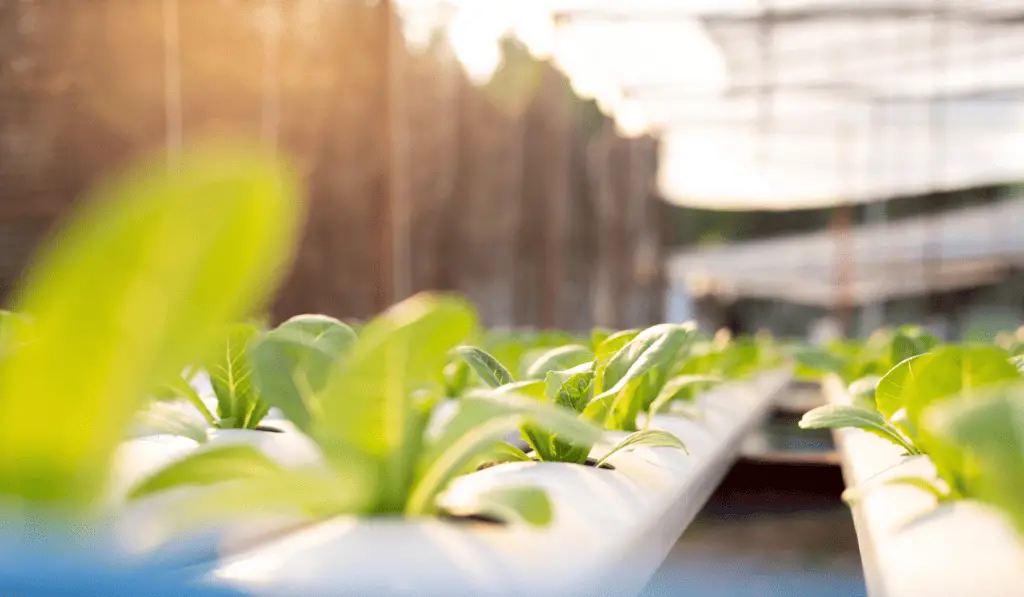
The Role of Beneficial Bacteria
In any thriving aquaponics system, there’s an unsung hero: beneficial bacteria. These invisible helpers break down fish waste, turning it into nutrients for the plants. They act like a magical bridge, transforming waste into treasure. Without these bacteria, your system will struggle to function effectively.
The Aquaponics Community
One of the most exciting aspects of delving into DIY aquaponics is the community that comes with it. Joining online forums, attending workshops, or participating in local events can be an excellent way to learn, share your experiences, and troubleshoot any issues. It’s like becoming a part of a global eco-conscious family.
Sustainability and You
Creating your own aquaponics system is a small step towards a more sustainable lifestyle. You’re not only reducing your carbon footprint but also teaching those around you about the importance of sustainable practices. It’s a profound message, conveyed through the simple beauty of a thriving fish tank.
Scaling Your System
Once you’ve mastered the basics, you might consider expanding your system. You could add more fish tanks, experiment with different plant species, or even venture into commercial aquaponics. The sky is the limit, and your little self-sustaining world can grow as large as your ambition allows.
Conclusion
In conclusion, setting up a DIY aquaponics system is akin to creating your own miniature, self-sustaining world. It’s a journey that takes a little effort, some planning, and a dash of creativity. But the rewards – a thriving symbiotic relationship between fish and plants – is an amazing thing to witness. By embracing aquaponics, you’re not just keeping a fish tank; you’re embracing a more sustainable future.
Frequently Asked Questions
What is the ideal fish-to-plant ratio in an aquaponics system?
The perfect fish-to-plant ratio isn’t set in stone. As a rule of thumb, a ratio of 1:1 in terms of fish pounds to plant grow bed square footage is generally accepted. It’s like maintaining a balanced seesaw, ensuring that neither side outweighs the other.
Can I use any fish species in my aquaponics system?
While theoretically any fish species can be used in aquaponics, some are better suited than others due to their hardiness and waste production. Goldfish, tilapia, and trout are popular choices. Think of it as choosing the right inhabitants for your aquatic neighborhood.
Which plants grow best in an aquaponics system?
Leafy greens, herbs, and certain fruits like tomatoes and strawberries often thrive in an aquaponics system. The plant choice largely depends on your fish tank size and nutrient production. It’s akin to choosing the right plants for a particular soil type in a garden.
How often should I feed the fish in my aquaponics system?
Feeding frequency depends on the fish species, their size, and the water temperature. Generally, feeding once or twice a day is sufficient. Imagine it as setting the dining schedule for your underwater citizens.
How can I prevent diseases in my aquaponics system?
Maintaining the right water temperature, ensuring proper aeration, and not overfeeding your fish can prevent most diseases. Regularly checking your fish and plants for signs of stress or illness is also key. It’s akin to playing doctor for your aquaponics system.
What if my plants are not growing properly?
If your plants aren’t growing well, check the water pH, nutrient levels, and lighting. Sometimes, adjusting these parameters can help. It’s like troubleshooting in any traditional garden.
How do I clean my aquaponics system?
One of the beauties of an aquaponics system is that it self-cleans. Fish waste is used by the plants, and the plants filter the water for the fish. Occasionally, you may need to wipe down the tank or remove dead leaves, but overall, it’s a low-maintenance system.
Is aquaponics organic?
Aquaponics can indeed be considered organic as it does not require artificial fertilizers or pesticides. The fish provide natural fertilizer for the plants, and the plants naturally filter the water. It’s like cultivating an organic garden, but with an aquatic twist.
